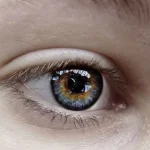Migraine aura is a neurological condition that is often associated with migraines. It refers to a set of symptoms that occur before or during a migraine headache. These symptoms can include visual disturbances, sensory changes, and difficulty speaking or understanding language.
In this blog post, we will explore the migraine aura causes, symptoms, and treatment options. By understanding this condition, you can better manage your migraines and improve your quality of life.
Understanding Migraine Aura
To fully understand migraine with aura, it’s important to first understand migraines themselves. Migraines are a type of headache that is characterized by severe pain, usually on one side of the head. They can be accompanied by a variety of symptoms, including nausea, vomiting, and sensitivity to light and sound.
Migraine aura is a unique feature of some migraines. It is thought to be caused by changes in the brain’s electrical activity. These changes can trigger a variety of symptoms, which can vary from person to person.
Some common migraine aura symptoms include visual disturbances, such as seeing flashing lights or zigzag lines, sensory changes, such as tingling or numbness in the face or hands, and difficulty speaking or understanding language.
By understanding migraine with aura, you can recognize the symptoms and take appropriate steps to manage your migraines.
Migraine Aura Causes
The exact migraine aura cause is not fully understood. However, it is believed to be related to changes in the brain’s electrical activity.
One theory is that the aura is caused by a wave of electrical activity that spreads across the brain. This wave can disrupt normal brain function and lead to the migraine aura symptoms.
Another theory is that the aura is caused by changes in blood flow to the brain. It is thought that changes in blood flow can trigger the release of certain chemicals in the brain, which can then lead to the symptoms of migraine aura.
More research is needed to fully understand the migraine aura causes. However, by identifying your triggers and avoiding them, you may be able to reduce the frequency and severity of your migraine aura episodes.
Migraine Aura Symptoms
Migraine aura can manifest in a variety of ways, with symptoms varying from person to person. Some common migraine aura symptoms include:
- Visual disturbances, such as seeing flashing lights, zigzag lines, or blind spots
- Sensory changes, such as tingling or numbness in the face or hands
- Difficulty speaking or understanding language
These symptoms can occur before or during a migraine headache, and may last anywhere from a few minutes to an hour.
It’s important to note that not all migraines are accompanied by aura. Some people only experience migraines without aura, while others may experience both types of migraines at different times.
Types of Migraine Aura
There are several types of migraine aura that can occur. These include:
Visual aura: This type of aura involves visual disturbances, such as seeing flashing lights, zigzag lines, or blind spots.
Sensorimotor aura: This type of aura involves sensory changes, such as tingling or numbness in the face or hands.
Dysphasic aura: This type of aura involves difficulty speaking or understanding language.
Migraine with brainstem aura: This type of aura involves symptoms such as dizziness, vertigo, and difficulty with coordination.
Retinal migraine: This type of aura involves temporary vision loss or blindness in one eye.
It’s important to note that not everyone experiences all types of migraine aura. The specific type of aura you experience may vary from person to person.
How Common Is a Migraine Aura?
Migraine aura is relatively common, occurring in about one-quarter to one-third of people who experience migraines.
It’s important to note that not all migraines are accompanied by aura. Some people only experience migraines without aura, while others may experience both types of migraines at different times.
If you experience migraine with aura, it’s important to track your symptoms and discuss them with a healthcare professional. They can help you develop a treatment plan to manage your migraines.
Migraine with Aura Stages
Migraine with aura typically progresses through several stages. These stages can vary from person to person, but generally follow a similar pattern.
The prodrome stage is the first stage of a migraine with aura. During this stage, you may experience subtle changes in mood or behavior, such as irritability or food cravings. This stage can last for hours or even days.
The aura stage is the second stage of a migraine with aura. This is when you may experience the visual disturbances, sensory changes, or difficulty speaking or understanding language associated with migraine aura. This stage usually lasts for about 20 minutes to an hour.
The headache stage is the third stage of a migraine with aura. This is when the severe headache pain typically begins. This stage can last for several hours to several days.
The postdrome stage is the final stage of a migraine with aura. During this stage, you may experience lingering symptoms, such as fatigue or difficulty concentrating. This stage can last for hours or even days.
It’s important to note that not all migraines follow this exact pattern, and some people may not experience all stages of a migraine with aura.
How Is Migraine Aura Diagnosed?
Migraine aura is typically diagnosed based on a thorough medical history and physical examination.
Your healthcare professional may ask you questions about your symptoms, such as when they occur and how long they last. They may also ask you about any family history of migraines or other neurological conditions.
In some cases, additional tests may be necessary to rule out other possible causes of your symptoms. These tests may include a brain MRI or CT scan.
Migraine with Aura Treatment
There are several treatment options available for migraine aura. The specific treatment plan will depend on the frequency and severity of your symptoms, as well as your overall health.
Some common migraine aura treatment options include:
Medications: Certain medications, such as triptans or anti-seizure medications, may be prescribed to help prevent or reduce the frequency of migraine aura episodes.
Lifestyle changes: Making certain lifestyle changes, such as getting regular exercise, practicing stress management techniques, and maintaining a healthy sleep schedule, may help reduce the frequency and severity of your migraines.
Avoiding triggers: Identifying and avoiding triggers, such as certain foods or environmental factors, may help reduce the frequency and severity of your migraine aura episodes.
It’s important to work with a healthcare professional to develop a personalized treatment plan that addresses your specific needs and goals.
Difference Between Migraine with Aura Vs Ocular Migraine
Migraine with aura and ocular migraine are two related conditions, but they have some key differences.
Migraine with aura refers to a type of migraine that is accompanied by specific symptoms, such as visual disturbances, sensory changes, or difficulty speaking or understanding language. These symptoms typically occur before or during the headache phase of the migraine.
Ocular migraine, on the other hand, refers to a type of migraine that is characterized by temporary vision loss or blindness in one eye. This vision loss typically lasts for less than an hour and is not accompanied by other symptoms, such as headache pain.
While both conditions can be disruptive and uncomfortable, they are distinct from one another.
Conclusion
In conclusion, understanding migraine aura is crucial for managing this often debilitating condition. The precise causes remain elusive, but genetic and environmental factors are key contributors. Recognizing the symptoms—such as visual disturbances, sensory changes, and speech difficulties—can help individuals seek timely intervention and avoid triggers. Effective treatments range from medications and lifestyle adjustments to alternative therapies, each playing a role in reducing the frequency and severity of migraine episodes. By staying informed and proactive, those affected by migraine aura can improve their quality of life and maintain better control over their health.
FAQs
What is a migraine aura?
A migraine aura is a set of sensory disturbances that precede a migraine headache, often including visual, sensory, or speech changes.
Is migraine with aura more serious?
Yes, it can be more serious as it may increase the risk of stroke and often involves more intense symptoms.
What are the common symptoms of migraine aura?
Common symptoms include visual disturbances (flashing lights, blind spots), sensory changes (tingling, numbness), and speech difficulties.
How do you fix a migraine aura?
Resting in a dark, quiet room, staying hydrated, and taking prescribed medications can help alleviate migraine aura symptoms.
Is migraine with aura rare?
No, about 25-30% of people with migraines experience auras.
How long does a migraine aura typically last?
A migraine aura typically lasts between 20 to 60 minutes.
Should I see a doctor if I experience migraine aura?
Yes, you should see a doctor to rule out other conditions and to manage your migraines effectively.
Are there treatments available for migraine aura itself?
Yes, treatments include medications such as triptans, anti-inflammatory drugs, and preventive therapies.





